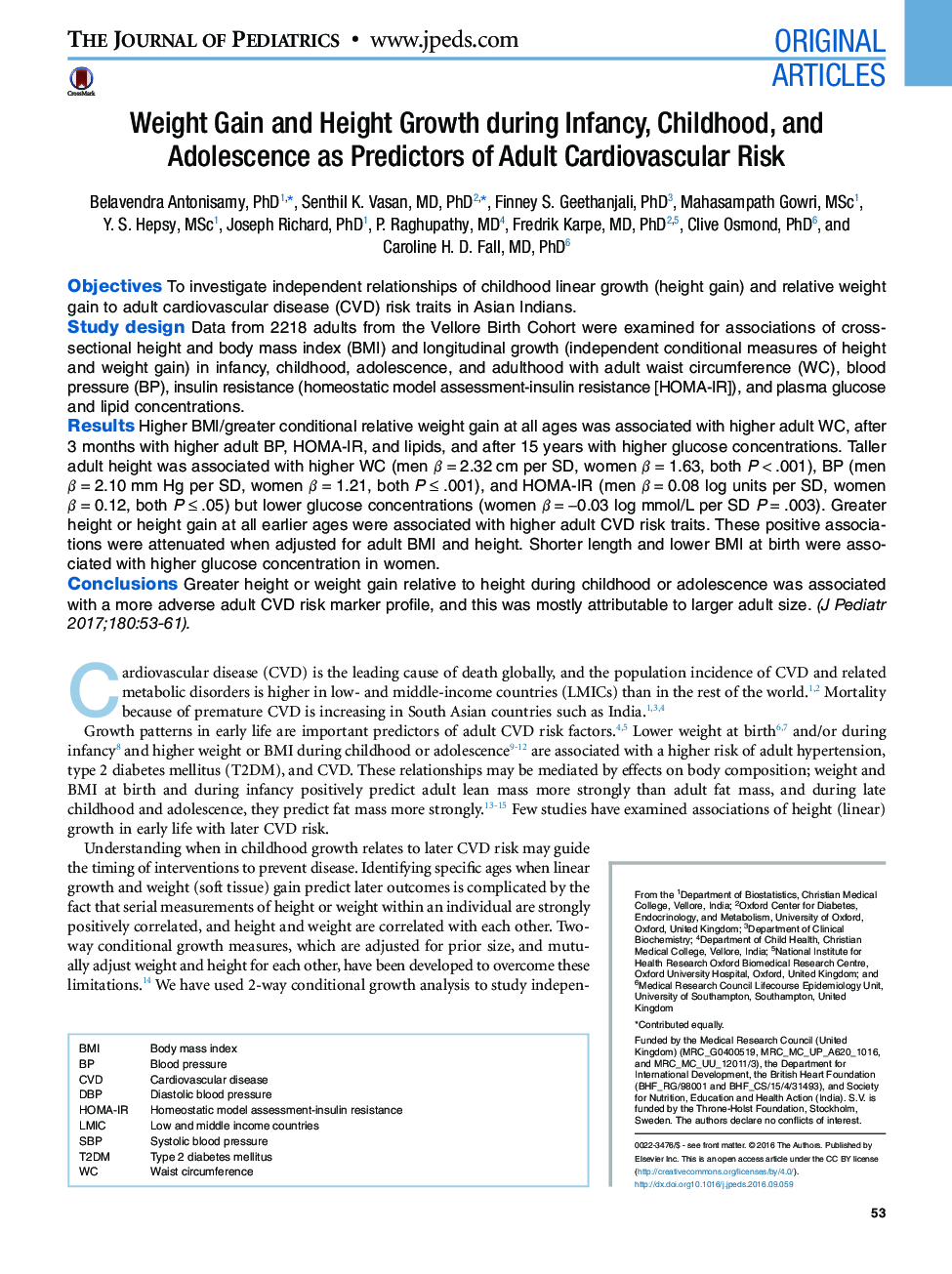| Article ID | Journal | Published Year | Pages | File Type |
|---|---|---|---|---|
| 5719282 | The Journal of Pediatrics | 2017 | 12 Pages |
ObjectivesTo investigate independent relationships of childhood linear growth (height gain) and relative weight gain to adult cardiovascular disease (CVD) risk traits in Asian Indians.Study designData from 2218 adults from the Vellore Birth Cohort were examined for associations of cross-sectional height and body mass index (BMI) and longitudinal growth (independent conditional measures of height and weight gain) in infancy, childhood, adolescence, and adulthood with adult waist circumference (WC), blood pressure (BP), insulin resistance (homeostatic model assessment-insulin resistance [HOMA-IR]), and plasma glucose and lipid concentrations.ResultsHigher BMI/greater conditional relative weight gain at all ages was associated with higher adult WC, after 3 months with higher adult BP, HOMA-IR, and lipids, and after 15 years with higher glucose concentrations. Taller adult height was associated with higher WC (men βâ=â2.32âcm per SD, women βâ=â1.63, both Pâ<â.001), BP (men βâ=â2.10âmm Hg per SD, women βâ=â1.21, both Pââ¤â.001), and HOMA-IR (men βâ=â0.08 log units per SD, women βâ=â0.12, both Pââ¤â.05) but lower glucose concentrations (women βâ=ââ0.03 log mmol/L per SD Pâ=â.003). Greater height or height gain at all earlier ages were associated with higher adult CVD risk traits. These positive associations were attenuated when adjusted for adult BMI and height. Shorter length and lower BMI at birth were associated with higher glucose concentration in women.ConclusionsGreater height or weight gain relative to height during childhood or adolescence was associated with a more adverse adult CVD risk marker profile, and this was mostly attributable to larger adult size.
